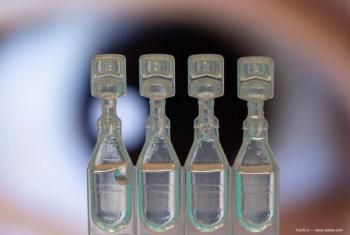
Factor H possibly instrumental in disease development
The use of animal models is key to the development of treatments for age-related macular degeneration (AMD).
May 2 - Fort Lauderdale, FL - The use of animal models is key to the development of treatments for age-related macular degeneration (AMD).
However, reproducing a disease model close to that in humans is extremely difficult because the genotype is largely unknown, the phenotype is complex, and most animals used in the laboratory do not have a macula. Primates would be an ideal model, but the species develops sporadic disease, according to Dean Bok, PhD, of the Jules Stein Eye Institute at UCLA, Los Angeles.
"The latest development is about a protein, factor H, that regulates complement, a group of proteins involved in attacks on micro-organisms but also on innocent bystander cells. The gene is HF1 or CFH and has been associated with AMD in four recent studies that showed that a factor H problem might exist in AMD," Dr. Bok said at the annual meeting of the Association for Research in Vision and Ophthalmology.
All of the studies caused attention to be focused on a specific region of chromosome 1, specifically 1q31-32, where there is a plethora of proteins involved in complement regulation, including HF1, a truncated splice variant HFL1, and H resembling proteins.
Factor H, produced in the liver, and locally in the retinal pigment epithelium and neurons, is thought to exert local control over complement activation. A change at a specific point in factor H, at a consensus repeat called SCR7, may be responsible for a change in the sequence from tyrosine to histadine.
When factor H is disrupted, such as in individuals who smoke, there is a five times higher increase in the risk of developing AMD. Dr. Bok pointed out that study of the complement pathway is worthy of a great deal of attention to elucidate the pathogenesis of AMD, and inflammation may be involved in complement activation.
Newsletter
Don’t miss out—get Ophthalmology Times updates on the latest clinical advancements and expert interviews, straight to your inbox.













































.png)


